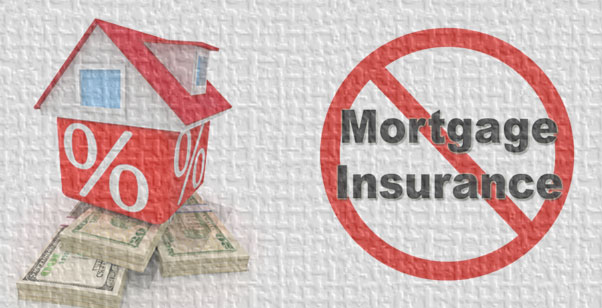
How to Avoid Paying Monthly Private Mortgage Insurance: TMI on PMI?

NJ Lenders Corp. prides itself on educating our customers and the general public about all things mortgage-related. Recently, there has been a lot of buzz about PMI, or Private Mortgage Insurance, and whether or not it is really necessary. In New York and New Jersey, homebuyers faced with some of the highest real estate costs and taxes in the nation are particularly curious about PMI and about potential ways to avoid it altogether. At NJ Lenders Corp., we don’t think there is such a thing as “TMI” (Too Much Information) on PMI, if it can positively affect your bottom line. This article will explain what PMI is and outline some strategies to help you avoid paying it.
What is PMI?
If you are buying a home and do not have enough money saved for a 20% down payment, most lenders will ask you to secure Private Mortgage Insurance. In the event that you stop paying your mortgage, the lender is then able to recover any potential losses from the PMI Company. In other words, you pay the PMI, but the lender is its beneficiary.
PMI fees vary depending on the size of the down payment and the size of the loan. They typically range between 0.5% and 1% of the original loan amount per year. Let’s look at an example. If you buy a $200,000 house and make a 10% down payment, you are borrowing $180,000. Let’s assume that the mortgage insurer charges you an annual premium of 0.75%. Your annual PMI premium, then, would be 0.75% of $180,000, or $1,350. This would typically then be divided into 12 monthly payments of $112.50, which would be added on to your monthly mortgage payment. PMI payments are usually no longer required once you have attained 22% equity in the home.
How To Avoid Paying PMI
More and more homebuyers in New York and New Jersey are seeking to avoid significant monthly PMI costs. There are several ways to accomplish this. The most obvious of these is simply to wait until you have enough money saved (or borrow money from a close friend or relative) in order to make at least a 20% down payment on the home. For many, however, this is not a realistic option, so other means must be explored.
1) In some cases, PMI can be avoided via a “piggy-back mortgage”. To understand what this means, let’s revisit the scenario above by assuming that you are purchasing a $200,000 home and have enough money saved for a 10% down payment. Instead of going the traditional PMI route, you may choose to enter what is known as an “80/10/10” agreement. This means that you take out one loan equaling 80% of the total property value, or $160,000, and a second loan (the “piggy-back” loan) equal to 10% of the total property value, or $20,000. As part of the agreement, you also pay the final 10% of the total home value, or $20,000. (Some lenders also offer “80/15/5” agreements, which work just like 80/10/10 agreements, except that the piggy-back loan covers 15% of the total property value and the homebuyer puts down just 5%.)
By dividing the loans in this manner and deducting the interest on both, you may avoid PMI, but buyer beware: in many cases the second mortgage has a higher interest rate and a variable term.
2) A second way to avoid paying monthly PMI is to pay it all up front. This can be done two ways. The lender may allow PMI to be paid as a lump sum in cash at mortgage origination and may even offer the homebuyer a discount for doing so. Alternately, the lender may add a one-time upfront fee to the total outstanding loan amount. The benefit of this is that as the loan is paid off over 25-30 years, the monthly PMI cost will be significantly reduced.
3) Lender-paid mortgage insurance is another option. This type of mortgage insurance eliminates monthly payments by allowing the lender to cover a one-time, up front PMI fee via an increase in the interest rate over the total duration of the loan.
4) A fourth way to avoid paying monthly PMI is known as Single Premium Financed PMI. What this means is that the lender allows you to finance the monthly insurance premium in a lump sum into the loan amount, thereby eliminating the need for monthly PMI and significantly lowering the homebuyer’s monthly payment. In these cases, LTV (Loan-to-Value) is calculated prior to adding the mortgage insurance cost to the loan amount.
5) Finally, monthly PMI payments may be avoided via what is known as a seller concession, also known as a seller contribution. In simple terms, a seller concession refers to a set dollar amount or a percentage of the home purchase price (typically 3% to 6%) that the seller agrees to contribute to you, the homebuyer, towards your closing costs. These closing costs include, among other items, your PMI. In return for this incentive to the buyer, seller concessions are typically financed over the life of the loan with the home’s purchase price. Seller concessions can only be used for closing costs and may not exceed the total value of said costs. When used properly, seller concessions can make the difference between a closed home sale and a lost one.
Hopefully, you now have a better understanding of what PMI is as well as your options for avoiding paying PMI on a monthly basis. If you are already paying monthly PMI, always remember that it is no longer necessary once you reach 20% equity in your home. In fact, the lender is required by the Homeowners Protection Act of 1998 to automatically discontinue PMI once you reach 22% equity in your home. Also keep in mind that PMI is deductible.
Whether you live in New York, New Jersey or any other state and you are considering a mortgage, give us a call at 1-800-908-0005 to explore your PMI options. At NJ Lenders Corp., our experienced professionals are ready to assist you and answer any of your PMI or other mortgage-related questions.